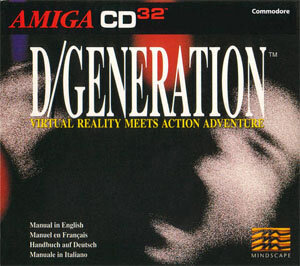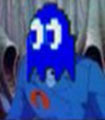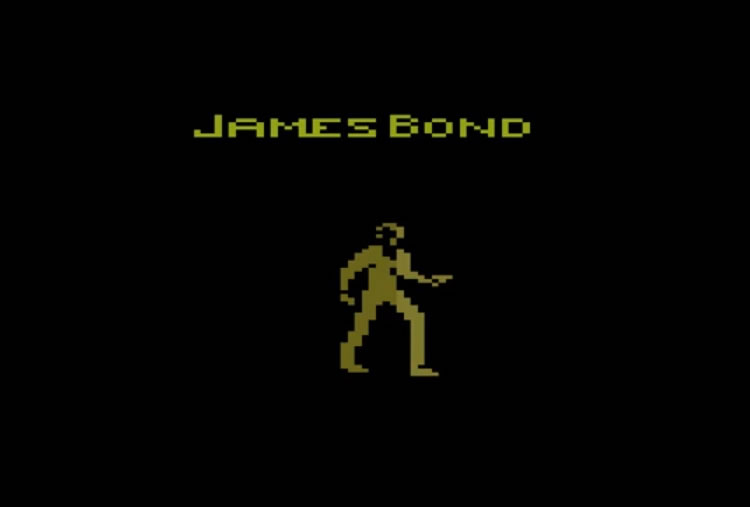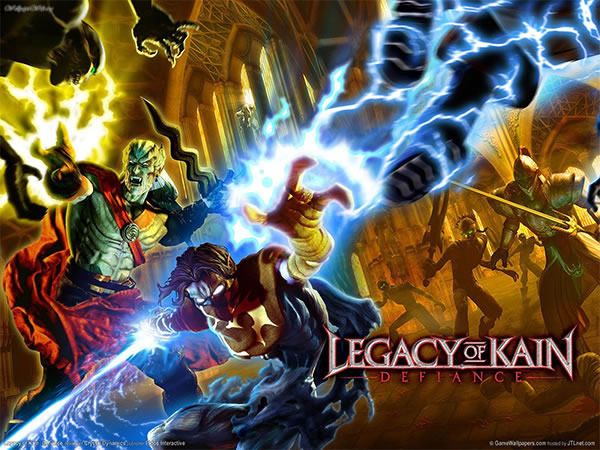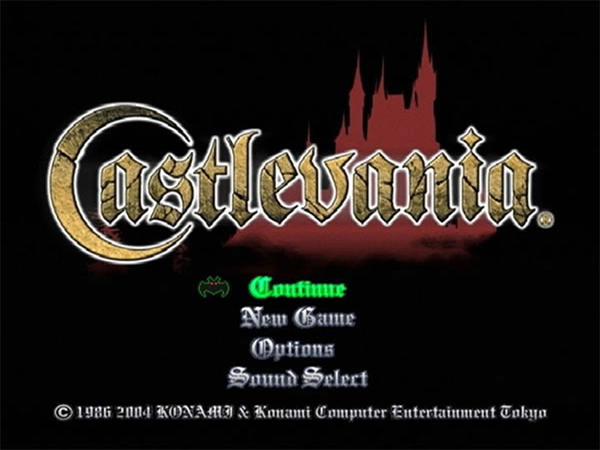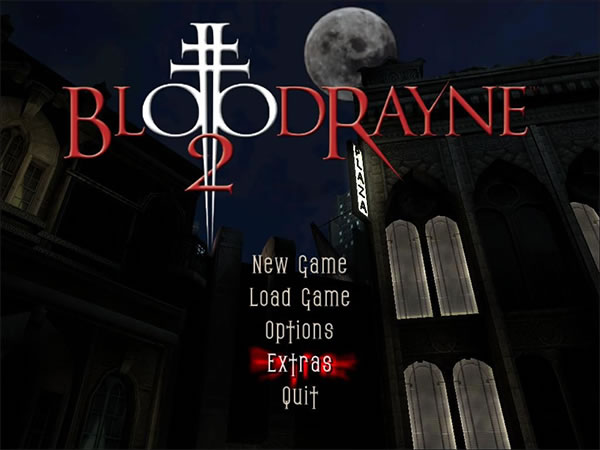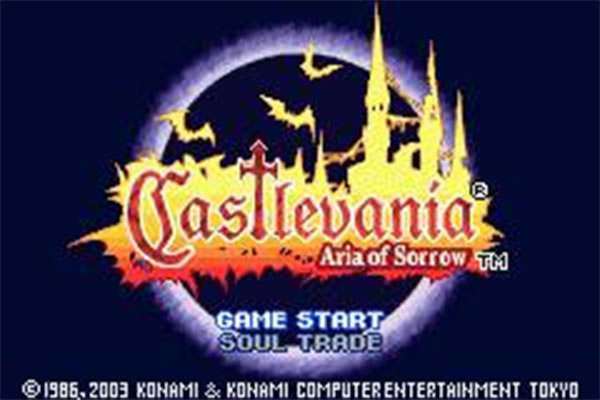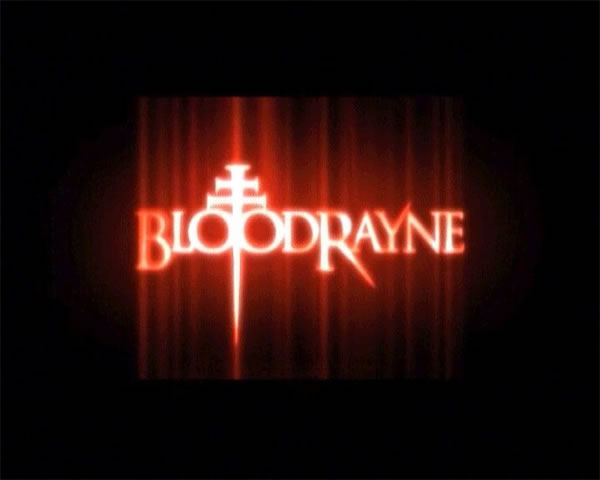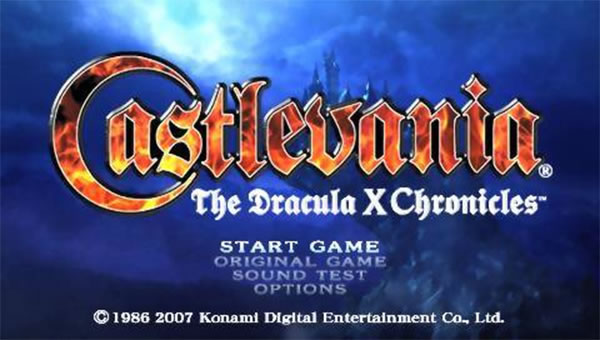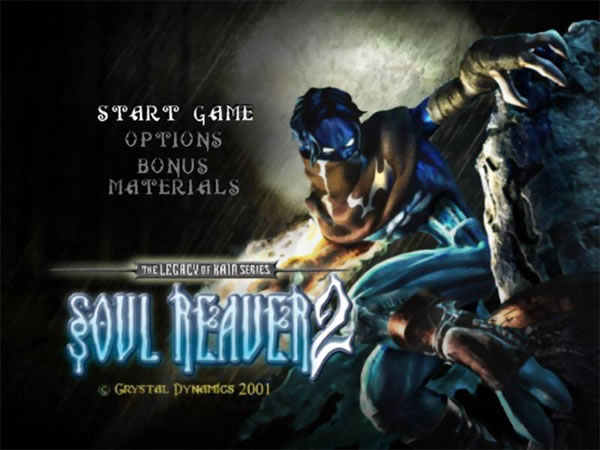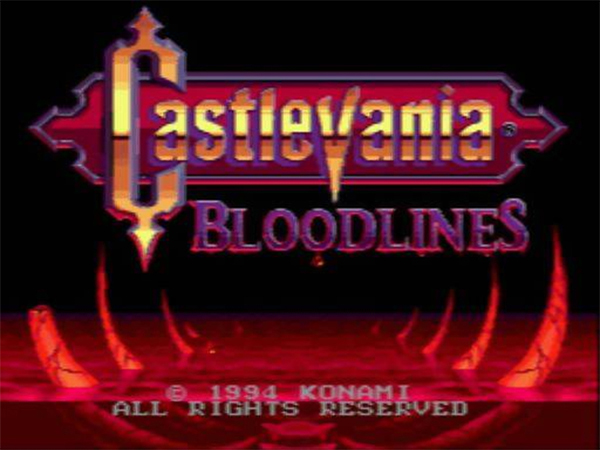- CLASSIC MAGAZINES
- REVIEW CREW
A show recapping what critics thought back
when classic games first came out! - NEXT GENERATION'S BEST & WORST
From the worst 1-star reviews to the best
5-stars can offer, this is Next Generation! - NINTENDO POWER (ARCHIVE)
Experience a variety of shows looking at the
often baffling history of Nintendo Power! - MAGAZINE RETROSPECTIVE
We're looking at the absolutely true history of
some of the most iconic game magazines ever! - SUPER PLAY'S TOP 600
The longest and most ambitious Super NES
countdown on the internet! - THEY SAID WHAT?
Debunking predictions and gossip found
in classic video game magazines! - NEXT GENERATION UNCOVERED
Cyril is back in this spin-off series, featuring the
cover critic review the art of Next Generation! - HARDCORE GAMER MAGAZING (PDF ISSUES)
Download all 36 issues of Hardcore Gamer
Magazine and relive the fun in PDF form!
- REVIEW CREW
- ELECTRONIC GAMING MONTHLY
- ELECTRONIC GAMING MONTHLY RANKS
From Mario to Sonic to Street Fighter, EGM
ranks classic game franchises and consoles! - ELECTRONIC GAMING MONTHLY BEST & WORST
Counting down EGM’s best and worst reviews
going year by year, from 1989 – 2009! - ELECTRONIC GAMING BEST & WORST AWARDS
11-part video series chronicling the ups and
downs of EGM’s Best & Worst Awards!
- ELECTRONIC GAMING MONTHLY RANKS
- GAME HISTORY
- GAME OVER: STORY BREAKDOWNS
Long-running series breaking down game
stories and analyzing their endings! - A BRIEF HISTORY OF GAMING w/ [NAME HERE]
Real history presented in a fun and pithy
format from a variety of game historians! - THE BLACK SHEEP
A series looking back at the black sheep
entries in popular game franchises! - INSTANT EXPERT
Everything you could possibly want to know
about a wide variety of gaming topics! - FREEZE FRAME
When something familiar happens in the games
industry, we're there to take a picture! - I'VE GOT YOUR NUMBER
Learn real video game history through a series
of number-themed episodes, starting at zero! - GREAT MOMENTS IN BAD ACTING
A joyous celebration of some of gaming's
absolute worst voice acting!
- GAME OVER: STORY BREAKDOWNS
- POPULAR SHOWS
- DG NEWS w/ LORNE RISELEY
Newsman Lorne Riseley hosts a regular
series looking at the hottest gaming news! - REVIEW REWIND
Cyril replays a game he reviewed 10+ years
ago to see if he got it right or wrong! - ON-RUNNING FEUDS
Defunct Games' longest-running show, with
editorials, observations and other fun oddities! - DEFUNCT GAMES QUIZ (ARCHIVE)
From online quizzes to game shows, we're
putting your video game knowledge to the test!- QUIZ: ONLINE PASS
Take a weekly quiz to see how well you know
the news and current gaming events! - QUIZ: KNOW THE GAME
One-on-one quiz show where contestants
find out if they actually know classic games! - QUIZ: THE LEADERBOARD
Can you guess the game based on the classic
review? Find out with The Leaderboard!
- QUIZ: ONLINE PASS
- DEFUNCT GAMES VS.
Cyril and the Defunct Games staff isn't afraid
to choose their favorite games and more! - CYRIL READS WORLDS OF POWER
Defunct Games recreates classic game
novelizations through the audio book format!
- DG NEWS w/ LORNE RISELEY
- COMEDY
- GAME EXPECTANCY
How long will your favorite hero live? We crunch
the numbers in this series about dying! - VIDEO GAME ADVICE
Famous game characters answer real personal
advice questions with a humorous slant! - FAKE GAMES: GUERILLA SCRAPBOOK
A long-running series about fake games and
the people who love them (covers included)! - WORST GAME EVER
A contest that attempts to create the worst
video game ever made, complete with covers! - LEVEL 1 STORIES
Literature based on the first stages of some
of your favorite classic video games! - THE COVER CRITIC
One of Defunct Games' earliest shows, Cover
Critic digs up some of the worst box art ever! - COMMERCIAL BREAK
Take a trip through some of the best and
worst video game advertisements of all time! - COMIC BOOK MODS
You've never seen comics like this before.
A curious mix of rewritten video game comics!
- GAME EXPECTANCY
- SERIES ARCHIVE
- NINTENDO SWITCH ONLINE ARCHIVE
A regularly-updated list of every Nintendo
Switch Online release, plus links to review! - PLAYSTATION PLUS CLASSIC ARCHIVE
A comprehensive list of every PlayStation
Plus classic release, including links! - RETRO-BIT PUBLISHING ARCHIVE
A regularly-updated list of every Retro-Bit
game released! - REVIEW MARATHONS w/ ADAM WALLACE
Join critic Adam Wallace as he takes us on a
classic review marathon with different themes!- DEFUNCT GAMES GOLF CLUB
Adam Wallace takes to the links to slice his way
through 72 classic golf game reviews! - 007 IN PIXELS
Adam Wallace takes on the world's greatest spy
as he reviews 15 weeks of James Bond games! - A SALUTE TO VAMPIRES
Adam Wallace is sinking his teeth into a series
covering Castlevania, BloodRayne and more! - CAPCOM'S CURSE
Adam Wallace is celebrating 13 days of Halloween
with a line-up of Capcom's scariest games! - THE FALL OF SUPERMAN
Adam Wallace is a man of steel for playing
some of the absolute worst Superman games! - THE 31 GAMES OF HALLOWEEN
Adam Wallace spends every day of October afraid
as he reviews some of the scariest games ever! - 12 WEEKS OF STAR TREK
Adam Wallace boldly goes where no critic has
gone before in this Star Trek marathon!
- DEFUNCT GAMES GOLF CLUB
- DAYS OF CHRISTMAS (ARCHIVE)
Annual holiday series with themed-episodes
that date all the way back to 2001!- 2015: 30 Ridiculous Retro Rumors
- 2014: 29 Magazines of Christmas
- 2013: 29 Questionable Power-Ups of Christmas
- 2012: 34 Theme Songs of Christmas
- 2011: 32 Game Endings of Christmas
- 2010: 31 Bonus Levels of Christmas
- 2009: 30 Genres of Christmas
- 2008: 29 Controls of Christmas
- 2007: 34 Cliches of Christmas
- 2006: 33 Consoles of Christmas
- 2005: 32 Articles of Christmas
- 2004: 31 Websites of Christmas
- 2003: 29 Issues of Christmas
- 2002: 28 Years of Christmas
- 2001: 33 Days of Christmas
- NINTENDO SWITCH ONLINE ARCHIVE
- REVIEW ARCHIVE
- FULL ARCHIVE
D/Generation
If you average together all the scores from the initial magazine reviews of D/Generation for the Amiga CD32, you will come up with an overall score of 81%. So why would this game warrant a higher grade than that fourteen years later? Well, for one, mainstream gaming has undergone some great changes and so have the perceptions of what makes a great adventure title. As impressive as modern adventures are, they are often marred by long expositions, endless dialogue, and the undying influence of the highly derivative world of manga and anime. By revisiting an older game like D/Generation, we can remind ourselves of the value of originality and reinforce the adage that "less is indeed more."
Written shortly after the fall of the Soviet Union and the balkanization of its former satellite states, D/Generation smartly foresees a future where a pride-injured Russia has laid waste to Kazakhstan and has warred with the Georgian Republic. The geo-political backdrop, however, is not the focus of the game. Rather than taking the long view of world events, the story unfolds through the experiences of an everyman-in this case a courier with a jetpack and package to deliver.
After jetpacking across Europe and Asia to reach a skyscraper in Singapore, our young delivery boy finds the receptionist of the Genoq pharmaceutical company out cold behind her desk. We soon learn that the package is for a man named Derrida, the head scientist of the company. Like his literary namesake, Derrida show us there is a major "differance" between sign and signifier as we learn that the Genoq building is just a front for a bio-engineering firm illegally creating creatures to aid in international warfare for the highest bidders. Besides contending with panoptic security systems, you must also wind your way past four generations of bio-engineered baddies to reach the 89th floor and face Derrida himself. Each generation is more brutal than the last, culminating in the fiercest one, the D-Generation model. By the end, you realize the protagonist has more dedication to his delivery job than that poor sap from that Castaway movie. (It's a good thing the game came out before product placement became normal in gaming.)
D/Generation has several appeals. Some moments work best with a run-and-gun mentality, but most rooms are best traversed by careful planning and studying how your laser ricochets off cubicle walls. The game-view is isometric, and while this usually creates for awkward control in most games, the programmers here were smart enough to allow a player to choose the axis configuration with the joypad. In other words, sometimes up on the d-pad equals up on the screen or it can match the direction according to the character's perspective. Choosing your axis wisely adds to the strategic attraction.
The game is by no means easy. Bio-weapons, laser cannons, mines, electrified tiles, and force fields kill you without mind or mercy. Gratefully, your own laser ricochets cannot hurt you, though they can quickly obliterate the hostages you want to save. Additionally, each rescued hostage grants you one life. Sometimes, however, it is in the player's interest to have a Genoq worker set off a booby trap in order to disable it. Morally ambiguous moments and choices like this were uncommon in gaming in 1993 and may cause stir with the player, but you can ease your troubled mind by justifying that the needs of the many outweigh the needs of one unlucky nine-to-fiver running into a laser fence and frizzling into millions of charred atoms.
A save slot also aids you in your climb to the 89th floor, but unfortunately, there is only one. If you found that you used your resources poorly (i.e. grenades), then you may want to start from scratch and budget your inventory more carefully. This lack of multiple save slots is really the only real bugaboo of the entire game.
Though D/Generation tackles real and frightening possibilities, it does not take itself terribly seriously until perhaps the final few levels. Rescued workers emerge from behind their desks to thank you which lead to some funny and sometimes bizarre conversations. One worker asks you for a date amidst all the chaos. Another worker who has apparently been cooped up in his cubicle too long introduces himself as "the bringer of famine" before laughing manically and running away. With each floor you ascend, the game's tone grows more and more ominous. On the last floor, the apocalyptic weight becomes fully realized as you confront Derrida in a room in the shape of a crucifix (an image that would automatically preclude the game from being ported to the sanitary Nintendo console of the early 1990s). When you add the 20-minute self-destruct timer that begins on the 87th floor, the game goes jaunt to frenzy with each ticking second.
Though good enough to warrant a sequel, D/Generation lives on singly as one of the highlights of the Amiga library. Recently, its head programmer, Robert Cook, once joked "my computer games are known for their obscurity." Regardless of its status as a hidden-gem, many gamers have drawn parallels between it and the popular Resident Evil (Biohazard) series. D-Generation's story has been aptly seen as rung on the ladder in the survival horror genre. Like Resident Evil it tells a story of a multi-tiered bio-engineering experiment gone awry through corporate malpractice. Though the halls of the Genoq building are not blood-splattered and dark, the game entails both "survival" and "horror" and it should be included in the same breath as games like Sweet Home or Alone in the Dark as precursors to a widely popular genre.
D/Generation is challenging, well-written, attractive, and most importantly, fun. It is one of the tidiest, well-designed games of its time. Every switch, tile, and square-inch serves its purpose with mathematic precision. If you are new to the Amiga CD32, you may want to start with this one. It delivers.
Written shortly after the fall of the Soviet Union and the balkanization of its former satellite states, D/Generation smartly foresees a future where a pride-injured Russia has laid waste to Kazakhstan and has warred with the Georgian Republic. The geo-political backdrop, however, is not the focus of the game. Rather than taking the long view of world events, the story unfolds through the experiences of an everyman-in this case a courier with a jetpack and package to deliver.
After jetpacking across Europe and Asia to reach a skyscraper in Singapore, our young delivery boy finds the receptionist of the Genoq pharmaceutical company out cold behind her desk. We soon learn that the package is for a man named Derrida, the head scientist of the company. Like his literary namesake, Derrida show us there is a major "differance" between sign and signifier as we learn that the Genoq building is just a front for a bio-engineering firm illegally creating creatures to aid in international warfare for the highest bidders. Besides contending with panoptic security systems, you must also wind your way past four generations of bio-engineered baddies to reach the 89th floor and face Derrida himself. Each generation is more brutal than the last, culminating in the fiercest one, the D-Generation model. By the end, you realize the protagonist has more dedication to his delivery job than that poor sap from that Castaway movie. (It's a good thing the game came out before product placement became normal in gaming.)
D/Generation has several appeals. Some moments work best with a run-and-gun mentality, but most rooms are best traversed by careful planning and studying how your laser ricochets off cubicle walls. The game-view is isometric, and while this usually creates for awkward control in most games, the programmers here were smart enough to allow a player to choose the axis configuration with the joypad. In other words, sometimes up on the d-pad equals up on the screen or it can match the direction according to the character's perspective. Choosing your axis wisely adds to the strategic attraction.
The game is by no means easy. Bio-weapons, laser cannons, mines, electrified tiles, and force fields kill you without mind or mercy. Gratefully, your own laser ricochets cannot hurt you, though they can quickly obliterate the hostages you want to save. Additionally, each rescued hostage grants you one life. Sometimes, however, it is in the player's interest to have a Genoq worker set off a booby trap in order to disable it. Morally ambiguous moments and choices like this were uncommon in gaming in 1993 and may cause stir with the player, but you can ease your troubled mind by justifying that the needs of the many outweigh the needs of one unlucky nine-to-fiver running into a laser fence and frizzling into millions of charred atoms.
A save slot also aids you in your climb to the 89th floor, but unfortunately, there is only one. If you found that you used your resources poorly (i.e. grenades), then you may want to start from scratch and budget your inventory more carefully. This lack of multiple save slots is really the only real bugaboo of the entire game.
Though D/Generation tackles real and frightening possibilities, it does not take itself terribly seriously until perhaps the final few levels. Rescued workers emerge from behind their desks to thank you which lead to some funny and sometimes bizarre conversations. One worker asks you for a date amidst all the chaos. Another worker who has apparently been cooped up in his cubicle too long introduces himself as "the bringer of famine" before laughing manically and running away. With each floor you ascend, the game's tone grows more and more ominous. On the last floor, the apocalyptic weight becomes fully realized as you confront Derrida in a room in the shape of a crucifix (an image that would automatically preclude the game from being ported to the sanitary Nintendo console of the early 1990s). When you add the 20-minute self-destruct timer that begins on the 87th floor, the game goes jaunt to frenzy with each ticking second.
Though good enough to warrant a sequel, D/Generation lives on singly as one of the highlights of the Amiga library. Recently, its head programmer, Robert Cook, once joked "my computer games are known for their obscurity." Regardless of its status as a hidden-gem, many gamers have drawn parallels between it and the popular Resident Evil (Biohazard) series. D-Generation's story has been aptly seen as rung on the ladder in the survival horror genre. Like Resident Evil it tells a story of a multi-tiered bio-engineering experiment gone awry through corporate malpractice. Though the halls of the Genoq building are not blood-splattered and dark, the game entails both "survival" and "horror" and it should be included in the same breath as games like Sweet Home or Alone in the Dark as precursors to a widely popular genre.
D/Generation is challenging, well-written, attractive, and most importantly, fun. It is one of the tidiest, well-designed games of its time. Every switch, tile, and square-inch serves its purpose with mathematic precision. If you are new to the Amiga CD32, you may want to start with this one. It delivers.
HOME |
CONTACT |
NOW HIRING |
WHAT IS DEFUNCT GAMES? |
NINTENDO SWITCH ONLINE |
RETRO-BIT PUBLISHING
Retro-Bit |
Switch Planet |
The Halcyon Show |
Same Name, Different Game |
Dragnix |
Press the Buttons
Game Zone Online | Hardcore Gamer | The Dreamcast Junkyard | Video Game Blogger
Dr Strife | Games For Lunch | Mondo Cool Cast | Boxed Pixels | Sega CD Universe | Gaming Trend
Game Zone Online | Hardcore Gamer | The Dreamcast Junkyard | Video Game Blogger
Dr Strife | Games For Lunch | Mondo Cool Cast | Boxed Pixels | Sega CD Universe | Gaming Trend
Copyright © 2001-2025 Defunct Games
All rights reserved. All trademarks are properties of their respective owners.
All rights reserved. All trademarks are properties of their respective owners.









